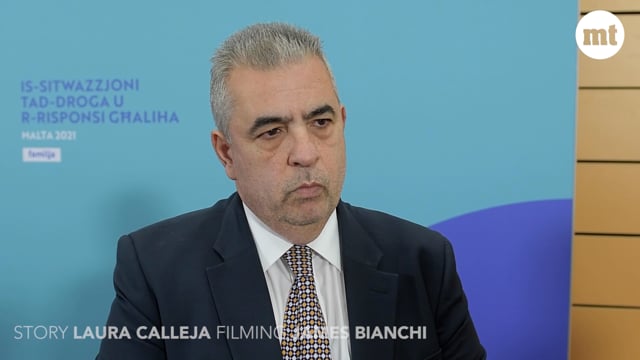[WATCH] Drug-related emergencies on the rise, report finds
Cocaine and cannabis are main drugs leading individuals to seek medical assistance, due to intoxication


In 2020 there were 516 drug-related emergencies, with cocaine and cannabis being the main drugs leading individuals to seek medical assistance due to intoxication, the latest Annual Drugs Report has revealed.
273 cases were cocaine related, 136 cases were cannabis related, 58 cases were related to heroin and 49 pertained to Cannabinoid Receptors Agonists (SCRA).
Speaking at the report's launch in Valletta, Family Minister Michael Falzon said the public must not look at drug addiction as something “of the past” as it was still very much present in the community.
“While drug use will always be a part of society – more needs to be done to encourage people to come forward, and when they do, they must be properly integrated back into society,” Falzon said, adding that education programs needed to be beefed up, targeting not just teenagers but also children.
Heroin remains linked to most severe health and social consequences
The report found that although the prevalence of heroin use has been declining in recent years in Malta, the use of these substances remained linked to the most severe health and social consequences amongst the drug-using population.
In 2020, there were an estimated 896 high-risk opioid users, which is 2.60 per 1,000 people, aged between 15 and 64. The figures have slowly declined since 2015, which registered the highest daily opiate users, at 1,708, down to 896 in 2020.
Notable for the first time, the number of service users entering drug treatment services for the first time in 2020 was also a record number with 497 individuals, a high increase when compared to the previous year, which saw 347 seek treatment.
The report found there have been a total of 1,762 individuals seeking treatment for the first time in the last five years.
Those entering treatment for the first time has also increased for cocaine users, with 54%, opposed to 32% in 2016.
Cocaine and cannabis at a glance
Cocaine is the second most common, primary drug among those in treatment in Malta. During 2020, there was an upward trend, with 601, or 30% of individuals in treatment, reporting cocaine as the drug that created most problems for them.
Cannabis continued to be the second most used primary drug, amongst the overall population, seeking treatment for the first time. In 2020, 269 individuals, or 14%, sought out treatment due to cannabis.
Drug seizures and arraignments
2020 saw a decrease in overall drug seizures, possibly due to the COVID-19 situation.
The report found that 525kg of cocaine was seized in 2020, a decrease from 2019, when 747kg were seized. Cannabis grass seized, amounted to 151kg in 2020, an increase when compared to the 389kg seized during the previous year.
A further drop in amount seized was also reported for cannabis resin, from 118kg in 2019, to a low 0.36kg seized in 2020.
However, nearly 2kg of heroin was seized in 2020, which is an increase compared to the 1kg seized the previous year.
The number of drug law offences for the year 2020 amounted to 283 in total, with 166 for possession and 117 for tracking.
A decreasing trend in arrests had already been registered for the years 2018 and 2019, with a total of 626 and 447 individuals arrested, during the respective years for possessions.
Drug treatment and not imprisonment
During the period since the tribunal was enacted in 2015, until December 2020, the majority of cases processed were for possession of cannabis grass, with 1,277 cases, followed by cannabis resin, with a total of 620 cases, bringing the total up to 1,897.
The majority of individuals appearing before the tribunal were Maltese residents, amounting to 2,218, with 66% out of a total of 3,354, while the remaining were foreign nationals.
Drug purity
The average purity at street level in 2020 was 21% for heroin, 28% for cocaine, 12% for cannabis resin and 20% for cannabis grass.
Cannabis resin increased in purity during the last years; this followed a slight decrease in 2015 and 2016 - when the purity at street level was 7%.
The purity levels for heroin has also increased from 18% in 2018 to 21% in 2020, and purity levels for cocaine has remained stagnant.




.jpg)

















